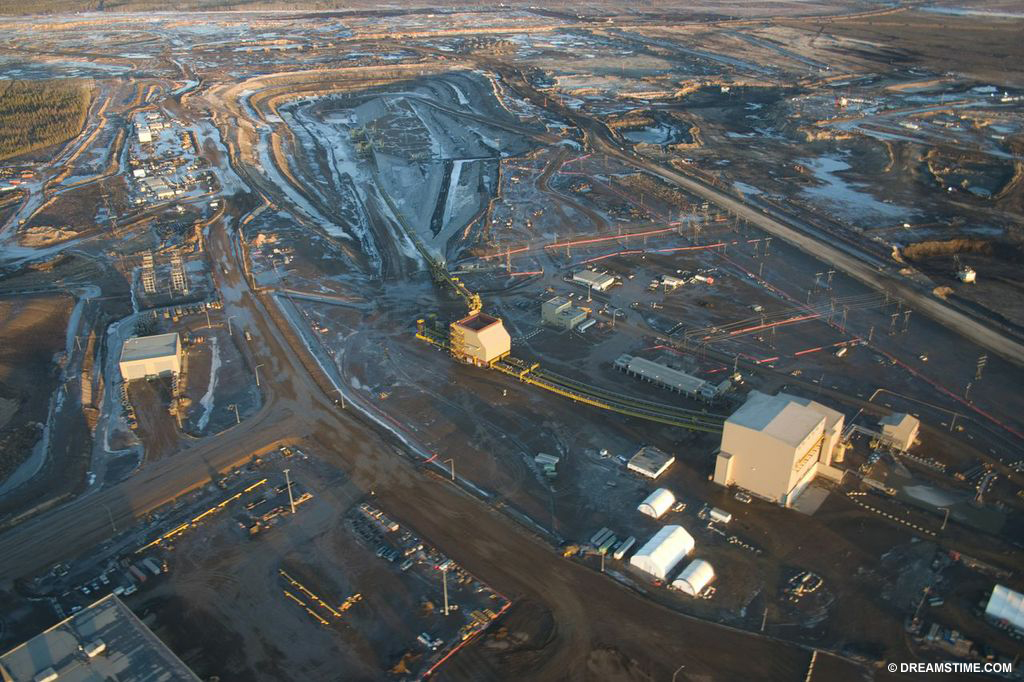Save the Humans
Threats Against Humanity
Consumer Demands: More Earths Needed
We need to all be held accountable for the decisions we make, what we use, what we buy and how we travel. We only have one planet and we must all put our natural world’s preservation first. Our consumer demands are driving us towards a mass extinction – and industry is responding to our wants. Why is China burning coal? Because people want low-cost power for electricity and industry to make products.
- Why is Canada extracting oil from tar sands? Because people want to drive cars.
- Why is Brazil destroying the rainforest? Because people want soy, corn, beef and other products produced cheaply.
- Why is Japan shark finning? Because people want shark fin soup at weddings.

The extraction of oil from Alberta Tar Sands
Our everyday choices impact the earth and our future. You are one of seven billion people on this planet. In one year, 1.7 billion cell phones were sold,[10. mobiThinking. “Global Mobile Statistics 2012.” http://mobithinking.com] 60 million cars were built, 154 million tonnes of fish were consumed,[11. Food and Agriculture Organization of the United Nations. “The State of the World Fisheries and Aquaculture 2012. Part 1. World review of fisheries and aquaculture.” www.fao.org] 400 million tonnes of paper were made,[12. World Wildlife Fund Global. “About pulp & paper production and use.” http://wwf.panda.org], and 20 trillion kilowatt-hours of electricity used.[13. The World Bank. “Electric power consumption (kWh per capita).” http://data.worldbank.org]
If everyone lived like an average American, a total of four Earths would be required to sustain humanity’s annual demand on the planet.[14. New York Daily News. “Two Earths would be needed to sustain human activity by 2030, report finds.” Meghan Neal. May 15, 2012. www.nydailynews.com]
Growing World Population
How will our natural world keep up with our growing population?
World population is expected to expand from 7 billion in 2012 to 8.9 billion in 2050[15. United Nations. Department of Economic and Social Affairs. Population Division. “World Population to 2300.” 2004. www.un.org] — a growth of 50 million people a year. By 2050, the population of developing countries will be around 8 billion, or 86 percent of the world population[16. Population Reference Bureau. “2012 World Population Data Sheet.”
Less developed regions (e.g., Africa, Asia, Latin America and the Caribbean) will account for 99 percent of the expected growth to the world population by 2050.[18. United Nations. Department of Economic and Social Affairs. Population Division. “World Population to 2300.” 2004. www.un.org] Asia is expected to grow by 1.5 billion between 2000 and 2050, but Africa will grow even faster, adding 1 billion people.[19. United Nations. Department of Economic and Social Affairs. Population Division. “World Population to 2300.” 2004. www.un.org]
By 2100, Asia and Africa will house 55 percent and 25 percent of the world population respectively and this should continue for the next 200 years.[20. United Nations. Department of Economic and Social Affairs. Population Division. “World Population to 2300.” 2004. www.un.org] North America by comparison will hit its peak, accounting for only 6 percent of world population by 2300.[21. United Nations. Department of Economic and Social Affairs. Population Division. “World Population to 2300.” 2004. www.un.org]
By 2100, our average life expectancy will be from 66 to 97 years old.[22. United Nations. Department of Economic and Social Affairs. Population Division. “World Population to 2300.” 2004. www.un.org] Not only will our population grow but we will live longer and depend on our natural resources to sustain our longer lives. The largest world population should occur around 2075 at about 9.2 billion and then decline to 8.97 billion by 2300.[23. United Nations. Department of Economic and Social Affairs. Population Division. “World Population to 2300.” 2004. www.un.org]
Climate Change: Our Consumption
The amount of carbon dioxide a country emits into the atmosphere depends mainly on the size of its economy, the level of its industrialization, and the efficiency of its energy use.[24. World Bank. “Economic Development and the Risk of Global Climate Change.” www.worldbank.org]

Transportation is a big emitter of carbon and increasingly getting worse
Our current rate of consumption is destroying our forests, biodiversity, soil, fisheries and oceans— basically our entire life support system. According to the World Wildlife Fund’s 2012 Living Planet Report, we are using 50 percent more resources than the Earth can provide, and that number is growing. By 2030, two planets will not be enough to sustain us.[25. World Wildlife Fund Global. “Living Planet Report 2012.” www.panda.org]
Over the next 50 to 100 years, our population will increase so much that increased resource use will overwhelm any reductions of energy use, carbon dioxide emissions, etc. For example, even if the average American eats 20 percent less meat in 2050 than in 2000, total US meat consumption is expected to increase by close to 5 million tonnes due to population growth.[26. Worldwatch Institute. “The State of Consumption Today.” 2013.] Rising incomes around the world combined with population growth will also increase the number of resources consumed.
By 2050, human beings could consume an estimated 140 billion tonnes of minerals, ores, fossil fuels and biomass per year – three times the current consumption rate.[27. United Nations News Centre. “Humanity’s voracious consumption of natural resources unsustainable – UN report.” May 12, 2011. www.un.org] We need to take immediate action.

